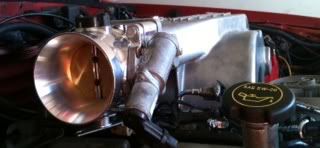I asked this once before but never got an answer because i worded it differently.
The EGR coolant lines on a fox, can i bypass those so they dont flow water through the TB? will the EGR gasses over heat the plenum at that point then? or will it be okay?
Im not looking to "gain" power, just seeing if its possible. ive seen cars with no lines, and ive seen cars with the lines capped.
JW.
Thanks.
The EGR coolant lines on a fox, can i bypass those so they dont flow water through the TB? will the EGR gasses over heat the plenum at that point then? or will it be okay?
Im not looking to "gain" power, just seeing if its possible. ive seen cars with no lines, and ive seen cars with the lines capped.
JW.
Thanks.

Comment